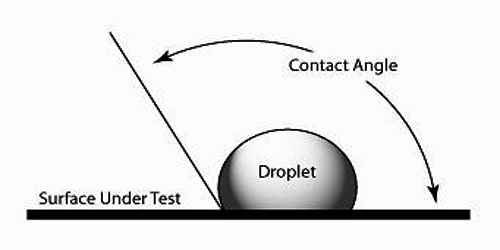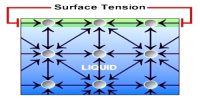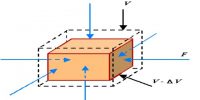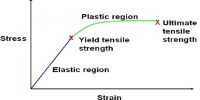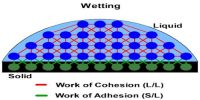Factors affecting angle of contact:
When a liquid comes in contact with a solid surface it is generally curved at the point of contact. There exists an angle between these two contact surfaces. Apparently this angle is the contact angle. When a liquid is in contact with solid, the angle between the surface of solid and tangent have drawn to the surface of liquid at the point of contact, measured on side of liquid, is called the angle of contact of that liquid with that solid. The contact angle and the wetting behavior of solid particles are influenced by many physical and chemical factors such as surface roughness and heterogeneity as well as particle shape and size. It is the angle at which a liquid interface meets a solid surface. The contact angle is not limited to a liquid interface; it is regularly appropriate to the interface of two liquids or two vapors.
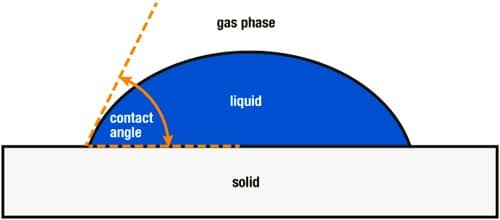
The angle of contact depends on the following factors:
(a) The nature of liquid and solid. The nature of the liquid and the solid which is in contact to form the angle of contact. Contact Angle is constant for given liquid-solid pair.
(b) The medium in which angle of contact is being made. The medium above the surface of the liquid. For example, angle of contact between mercury and glass when there is air above the mercury surface is different than the angle of contact between them when water is there above the mercury surface.
(c) The purity of liquids and solids. The independence of the angle of contact to which the inclination of solid is inclined to the liquid surface. If the liquid is not pure and the surface of solid is not clean, then the angle of contact will change. The angle of contact between pure water and clean glass is nearly zero. For liquid which completely wets the solid, the angle of contact is zero. (e.g., – water in contact with glass). For liquid which partly wets the solid, the angle of contact is acute. (e.g. – kerosene in contact with glass). For liquid which does not wet the solid, then the contact is obtuse. But for a slightly oily glass plate, the angle of contact increases may even become more than 90°.
(d) Surface geometry can be used to tune the contact angle; with increasing surface roughness the apparent contact angle decreases for hydrophilic materials and increases for hydrophobic materials.
